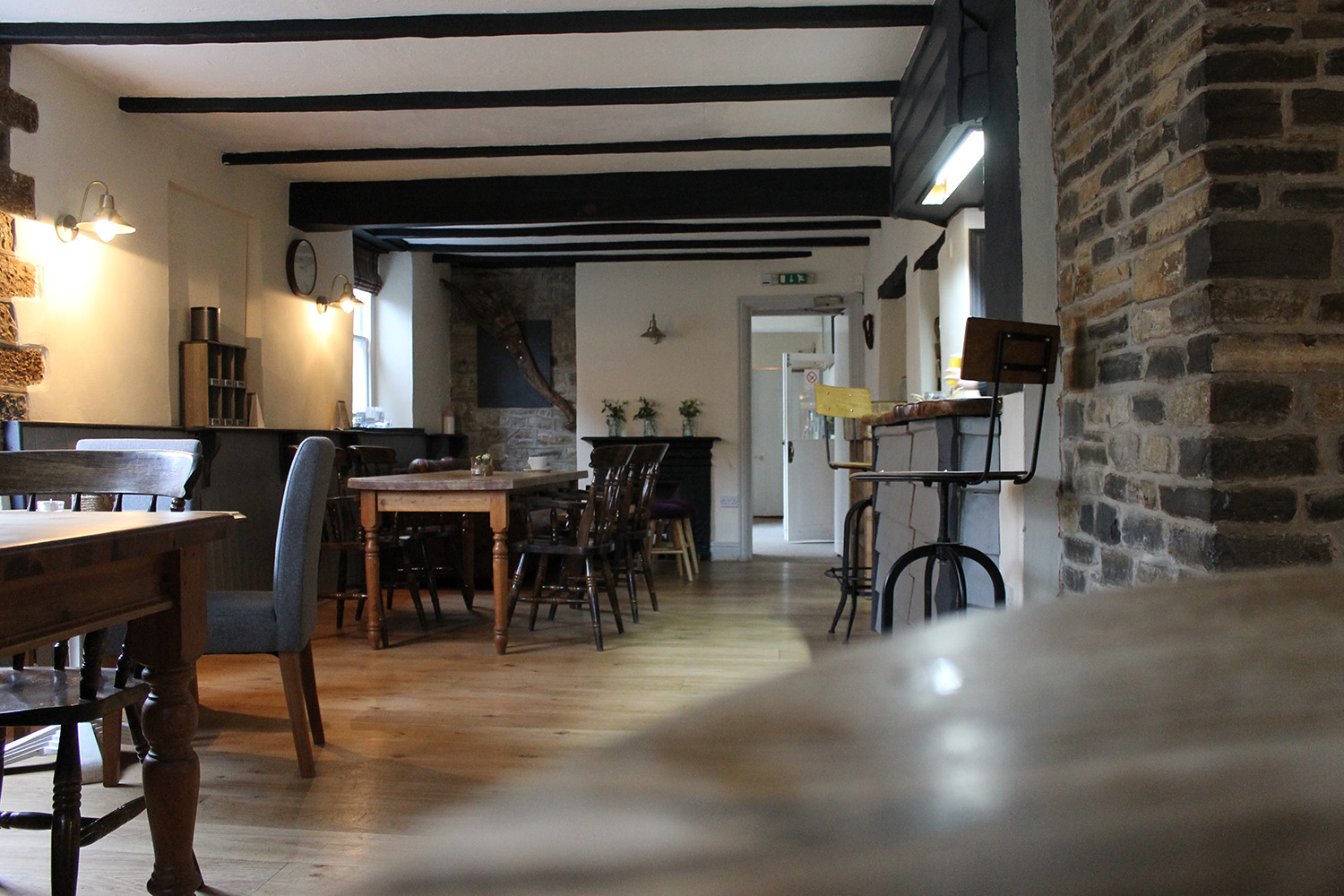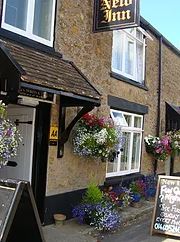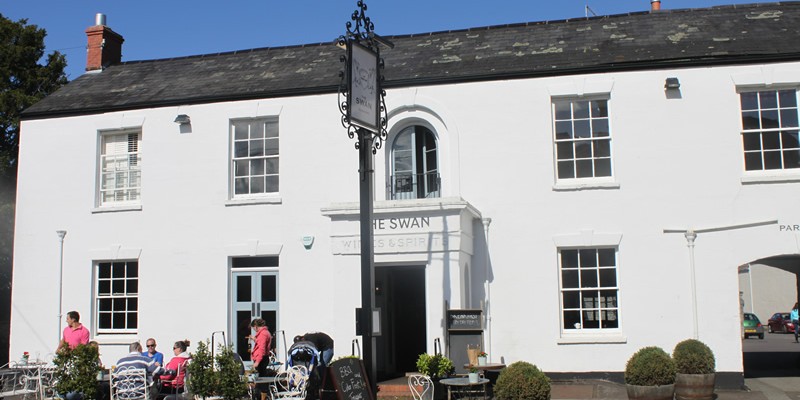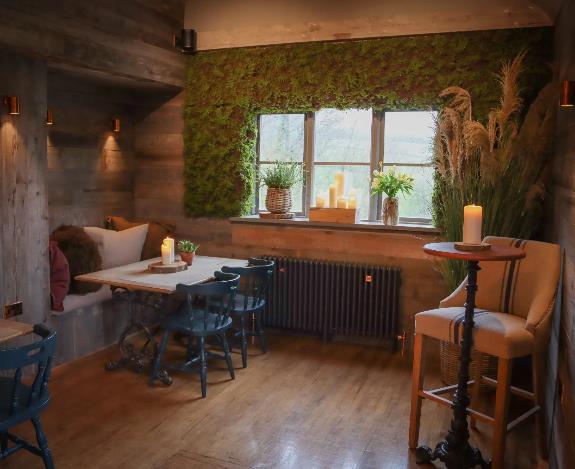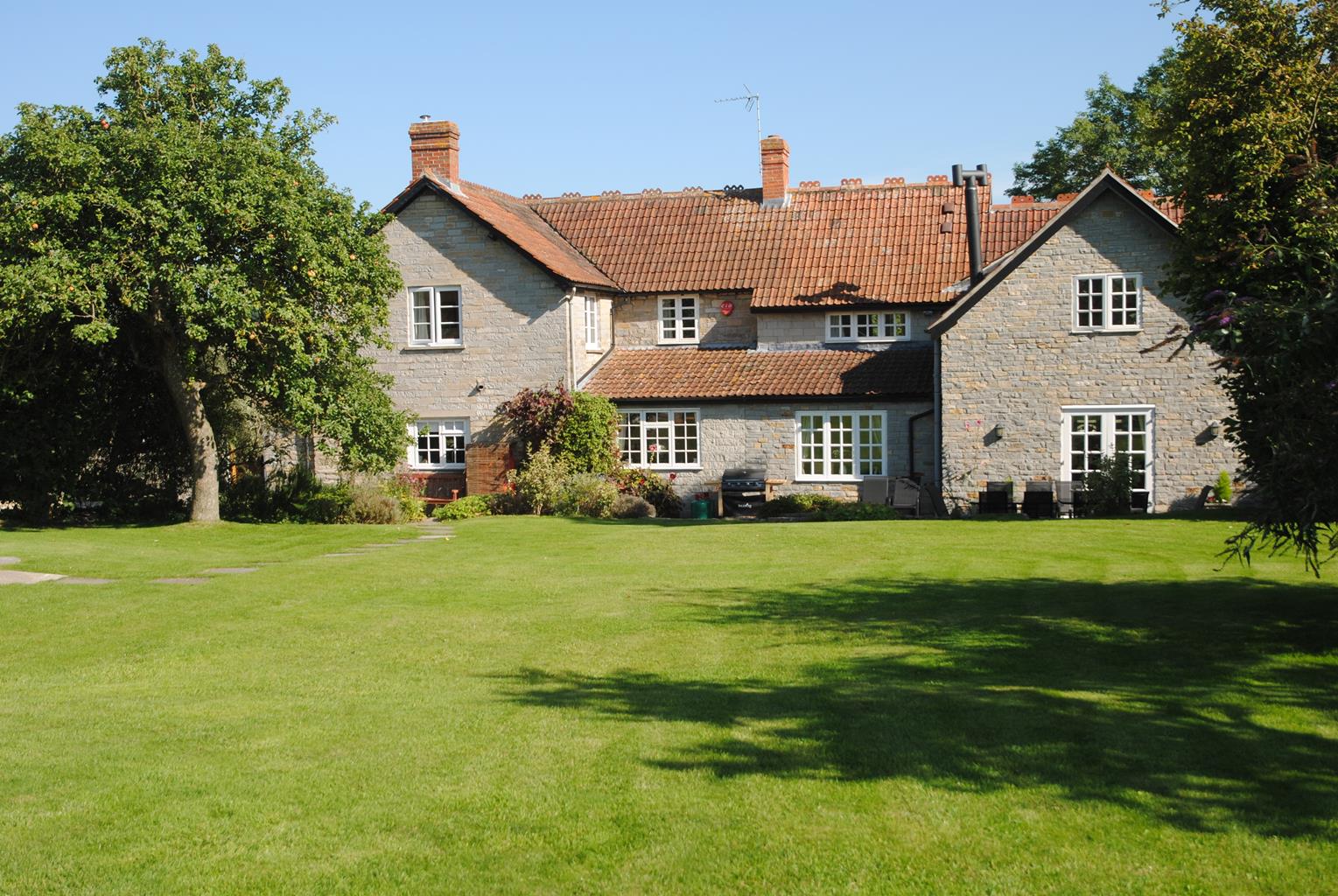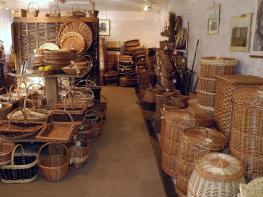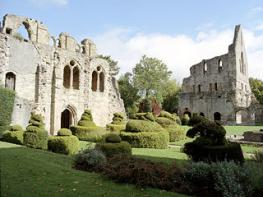A tranquil group of self-catering accommodation hidden deep in the Somerset countryside and only…
Burrow Mump

A gentle wander around the Somerset Levels near Burrowbridge leading up to a hump called a ‘mump’.
5.25 miles (8.4kms)
About the walk
After the last ice age, around 10–18,000 years ago, this ground was under the sea; in one sense it still is, as the high tide in the Bristol Channel rises up to 20ft (6m) above the fields and ditches. If the sea ever does get back in, it will lap against Glastonbury Tor and make Bridgwater and Burnham reminiscent (albeit in just one sense) of Venice – they will have canals instead of streets. The draining of this ground started in Roman times, but gathered pace in the early Middle Ages. The three centuries following the Norman conquest (until the Black Death) brought increasing prosperity and security, shown by, among other things, the windmills that sprung up along the Polden Hills. The growing population required more land to be drained for the plough and the cow.
Summer pasture
The water-meadows around Barrow Mump were first drained by the monks of Glastonbury Abbey in about 1255. They raised walls to keep out the pervasive waters of the River Parrett, to form fertile water-meadows. In winter these would be allowed to flood, their soils enriched by silt from the river. In summer the drained grasslands formed highly fertile grazing land for their cattle, with convenient and effective wet fencing and plenty of fresh drinking water. This agricultural process may give us the origin of 'Sumor Saete' or Somerset, the 'land of summer'. Drainage was continued through the ages: the King's Sedgemoor Drain, with its complex arrangement of sluices and pumps, was constructed in the 19th century; and managed drainage came to the Huntspill River area during World War Two. Wind pumps were replaced by steam-powered engines and then by the diesel one that may be heard thumping in the distance at the start of the walk. Our route is around the drove tracks and the river barriers, with a final ascent of Burrow Mump for an overall view.
In the days when the surrounding ground was swamp, Burrow Mump was occupied by the local Celtic people against the Romans. In the Anglo-Saxon era, it was a strongpoint of King Alfred's; he fortified it against Danish raiders coming up the River Parrett. Later it held a Norman castle. Once the surroundings were drained its tactical value decreased, and the present Chapel of St Michael was built by the monks of Athelney Abbey. Even so it remained an obvious strongpoint, and the chapel was held by the Royalists in 1645 after their crushing defeat by Cromwell's New Model Army at the Battle of Langport. It was partially destroyed on that occasion, restored in the 18th century, and has fallen back down again since then. The summit, though only raised 100ft (30m) above the sea-level surroundings, commands a wide and interesting view. Half a dozen parish churches can be seen in various directions. The closest of these, looking due north from the Mump, is St Mary's in Westonzoyland, with its square tower. Here captured rebels were imprisoned by government troops after their defeat at the Battle of Sedgemoor in 1685. Closer at hand, the distinctive pattern of droves (tracks) and walls (river barriers, originally 12ft (4m) high and 30ft (9m) wide) can be seen around the water-meadows.
Walk directions
A gate leads on to the base of the Mump. Circle the hill's base to the left to a small gate and steps down to the Burrow Bridge. Just before the bridge turn right into Riverside. After 350yds (320m) turn right into Burrow Drove, which becomes a tractor track. On either side and between the fields are deep ditches, coated in bright green pondweed. At a T-junction there's a culvert of 19th-century brick on the left. Here turn right on a grassier track: it passes round to left of Burrow Wall Farm, to the busy A361.
A 'public footpath' sign points to a track opposite. After just 30yds (27m) turn left through a metal gate. Follow the bushy Burrow Wall to the usually muddy Grove Farm. Pass through gates to right of the farmyard, to continue along the foot of a wooded bank rising on your left. At the corner of the second field a kissing gate leads up between brambles to a green track: turn right here to reach a lane near Pathe, a farm.
Turn right along the lane, ignoring a track on the right, to reach a side-lane on the right. Cross its bridge to a hedge-gap on the right and a very narrow footbridge. Continue through several fields, with a wide ditch on the right. Near by, on the left, is the low banking of Challis Wall, concealing the Sowy River. The ditch on the right gradually gets smaller. When it finally ends bear right to the River Parrett and follow it to a latticework road bridge. Cross this into Stathe.
Keep ahead through the village past Ludwells Farm, to reach a kissing gate on the right waymarked 'Macmillan Way'. Follow the right edge of one field to a gatepost; cross to the hedge opposite and follow it round to the left, to a gate. Continue ahead with a hedge on your right, to where a hedged track leads to a road. Turn left, scrambling up the banking, to walk on the Southlake Wall between a road and river.
As the road turns away from the river, rejoin it. Once across Stanmoor Bridge you can bear right (if not too nettly) for a river bank path to Burrowbridge. Turn right across the bridge and, this time, climb to the top of Burrow Mump for fine views of Somerset.
Additional information
Tracks, paths, unfrequented field-edges
Flat pasture with ditches and one surprising, small hill
Good on drove tracks where dogs are separated from livestock by deep ditches
OS Explorer 140 Quantock Hills & Bridgwater
National Trust car park (free) at Burrow Mump
None on route
<p>Impressive during winter floods, but if the A361 road is closed, then the walk may also be underwater before reaching the village of Stathe</p>
WALKING IN SAFETY
Read our tips to look after yourself and the environment when following this walk.
Find out more
Also in the area
About the area
Discover Somerset
Somerset means ‘summer pastures’ – appropriate given that so much of this county remains rural and unspoiled. Ever popular areas to visit are the limestone and red sandstone Mendip Hills rising to over 1,000 feet, and by complete contrast, to the south and southwest, the flat landscape of the Somerset Levels. Descend to the Somerset Levels, an evocative lowland landscape that was the setting for the Battle of Sedgemoor in 1685. In the depths of winter this is a desolate place and famously prone to extensive flooding. There is also a palpable sense of the distant past among these fields and scattered communities. It is claimed that Alfred the Great retreated here after his defeat by the Danes.
Away from the flat country are the Quantocks, once the haunt of poets Samuel Taylor Coleridge and William Wordsworth. The Quantocks are noted for their gentle slopes, heather-covered moorland expanses and red deer. From the summit, the Bristol Channel is visible where it meets the Severn Estuary. So much of this hilly landscape has a timeless quality about it and large areas have hardly changed since Coleridge and Wordsworth’s day.
Nearby stays
Restaurants and Pubs
Nearby experiences
Recommended things to do
Why choose Rated Trips?
Your trusted guide to rated places across the UK
The best coverage
Discover more than 15,000 professionally rated places to stay, eat and visit from across the UK and Ireland.
Quality assured
Choose a place to stay safe in the knowledge that it has been expertly assessed by trained assessors.
Plan your next trip
Search by location or the type of place you're visiting to find your next ideal holiday experience.
Travel inspiration
Read our articles, city guides and recommended things to do for inspiration. We're here to help you explore the UK.

